RSP’s VFX supervisors Tim Crosbie and Dennis Jones talk about 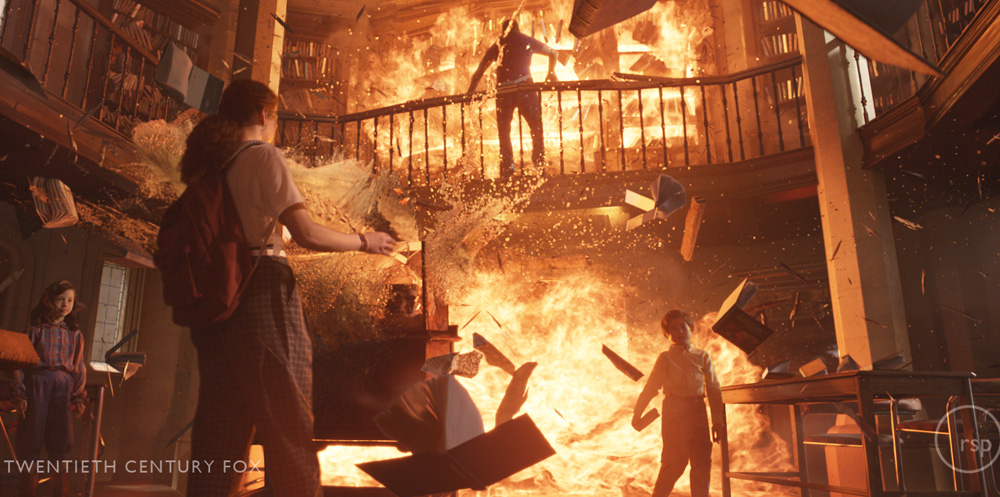
their return to hyperspeed with Quicksilver and working with
Cyclops in Marvel’s new film ‘X-Men: Apocalypse’.
RSP Turns Up the Speed for ‘X-Men: Apocalypse’
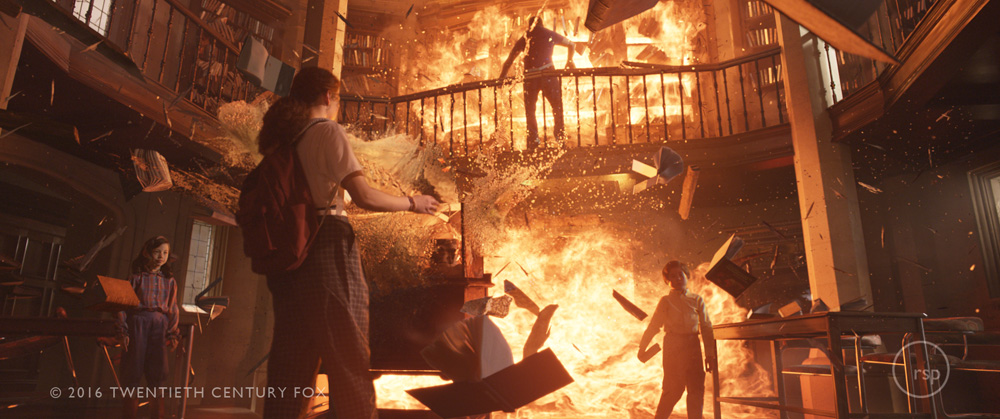
RSP visual effects company in Australia worked on several major sequences in the new Marvel film ‘X-Men: Apocalypse’. RSP’s two VFX supervisors Tim Crosbie and Dennis Jones worked with the production VFX supervisor John Dykstra, VFX producer Blondel Aidoo and 2nd unit VFX supervisor Matt Sloane.
The team worked on exciting scenes with two of Marvel’s superheroes, Quicksilver and Cyclops, at Professor Xavier’s School for Gifted Youngsters at the X Mansion. RSP did not travel out to the set at Montreal but started reviewing the previs for their shots with the production via CineSync from their studio in Adelaide in April and May 2015.
Because the previs was very accurate and detailed, although the sets were still not quite complete, Tim and Dennis could help John work out what could be captured in camera, on green screen or on set, what could be done better with visual effects, and how to set up the shoots. Plates started turning over in August, and their final VFX shots were delivered by April 2016.
The Quicksilver Rescue sequence was the team’s biggest effort, returning to their portrayal of ‘Quicksilver time’ as experienced by the ultra fast Quicksilver, for the previous X-Men movie ‘Days of Future Past’. The action begins as an explosion rips through Xavier’s School at the X Mansion. Joining Quicksilver’s transition from real time to hyperspeed, we watch him dash inside from the yard in front of the school to the interior, while everything and everyone else grinds to a virtual halt and the explosion very slowly starts to take its toll.
Quicksilver Time
He races from room to room rescuing students and dodging giant fire balls and particles of exploding debris suspended in mid-air – many of which needed to be precisely tracked and composited into the images as CG and 2D assets. The sound track running in the background, ‘Sweet Dreams’ from the Eurythmics, was another important element in this sequence. Once the music had been chosen, the edit could be finalised, and then the visual effects could proceed.
The sequence was shot mainly on the RED Dragon at 5K, and involved some shots on the Phantom Flex at 4K. While the rest of the film was shot natively in stereo, the production decided to capture this sequence in mono format and post convert the shots, because of the precise tracking needed in post. Tim Crosbie explained that native stereo footage can be difficult to track, especially in wide shots, and also noted that post-conversion from mono to stereo has become effective enough to prevent a noticeable difference between the photography in this sequence compared to the others.
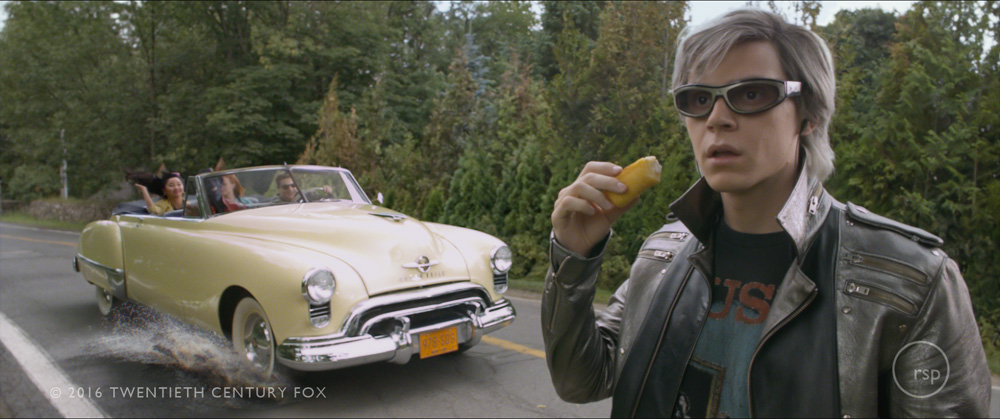
John Dykstra, like Tim, likes to capture as much in camera as possible and they aimed to do this on the set, believing it would not only make the finished scenes look more realistic to audiences, but help make the edit more natural and straightforward, and help them light the visual effects more effectively.
Environment Re-Build
Tim said, “RSP’s team knew the Quicksilver aesthetic very well, of course – and not only from working on the previous film. I’ve followed Quicksilver’s adventures and his super-fast ‘universe’ since I was young. Having experience from ‘Days of Future Past’ also made the sequence more fun to work on this time.”
Nevertheless, having control over every aspect of the shots throughout the sequence was essential, and therefore the team re-built the full exterior environment and the interior in 3D. These builds, based on photography and LIDAR scans, would also be needed for the explosions and other scenes in which the X-Mansion is destroyed and rebuilt, more than once.
The most efficient approach was to spend time - 2½ months in fact - on the sequence’s cameras and layout in order to avoid building too much, in too much detail. The sequence involves shots captured on the live action set and augmented with the team’s huge inventory of CG assets and green screen elements. Some of the trickier shots include Quicksilver throwing some of the students out of a smashed window, which required six motion control shots captured at high frame rates of actors performing on green screen.
Controlled Chaos
RSP’s Dennis Jones, working as VFX supervisor on the film along with Tim, said, “I had the responsibility of identifying and specifying all props and digital elements that would compose a shot. Many shots required decisions and compromises about how to replace, augment or add the CG props.
“Most on-set rooms were filmed fully dressed with props so we had to design how and where the CG would take over when a wall exploded, forcing props off desks and into the air, for example. This also included wall surfaces and furniture which would be put through our Houdini destruction pipeline. Alongside this we always required accurate match moves and dimensionalised rotoscoping, accounting for 3D space, to allow objects and destructed elements to avoid live action elements. This is most apparent when Quicksilver is throwing the kids out of the window.”
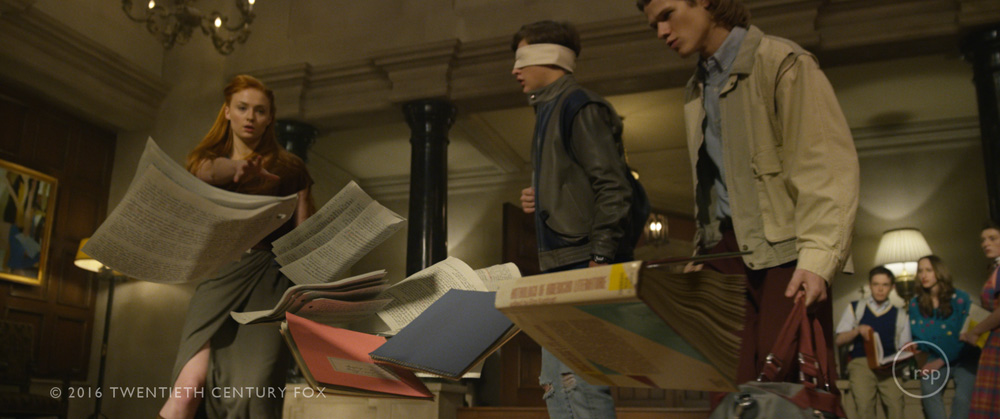
The shots in this sequence show Quicksilver interacting with other characters who are living in normal time. For the most part, the other actors were standing virtually motionless. But when Quicksilver picks them up and moves them, for example, they sometimes had to be manipulated on wires by the stunt team while Quicksilver performed. Such instances involved a lot of clean up and other work in compositing, including adjusting some parts of the actors in the shots. Therefore, the compositors would stabilize the actors with posable digital macquettes – or ‘digi-macquettes’ - that served as placeholders to help RSP’s team set up their 3D cameras.
Retiming and Dependencies
Dennis also described the issue of retiming and dependencies. “As in our earlier Quicksilver sequence, creative retiming of practical elements is the foundational canvas that everyone else paints on,” he said. “The management and staging of multiple, subtly different retimes, sometimes approaching 10 or more live action elements, is critical to constructing a clean, singular digital world where all elements exist in a complete and symbiotic relationship. A single change to one retime element can cause a butterfly effect that ripples through the whole production pipeline.”
Supporting this kind of work is the fact that RSP has developed an asset management system over the years, originating from their room reconstruction work on the Harry Potter films. “Over time we have strengthened this with tight Shotgun integration and, more recently, a push towards the concepts outlined in Pixar's USD, Universal Scene Description. This allows more agility and decouples scenes construction into more atomic building blocks that can be interchanged right up to render time,” Dennis said.
Exploding in Slo-Mo
The Phantom Flex camera was used mainly for capturing reference video of explosions at extreme frame rates to study the looks at slow speeds. “The Phantom wasn’t always suitable for actual 2D elements because, although the camera’s frame rate is high, the dynamic range was not wide enough to show the detail we wanted in the dark and light areas of the shots,” said Tim. “It tended to clip detail outside of about 10 stops. Reflections, which need to be included, would have to be re-built through the red and blue channels of the image.”
Houdini was used for the explosions, although at first the artists hadn’t been sure how well the software’s simulations could cope with the super slow speed they needed to portray. “We spent time on the first film figuring this out, optimising the speed between looks and realism,” Tim said. “This time, we had more shots, more complexity and a larger number of different set-ups – in the mansion lobby, up the stairs and outdoors. To handle that, we proceduralised some of the explosions, which also meant we could art-direct the speed, accelerating or decelerating according to the shot location and story.”
They sometimes used animations to underlie their simulations for rigid body effects to lend more control, for example, when an animated 3D object needed to work closely with a simulation. Such workflows were planned carefully.
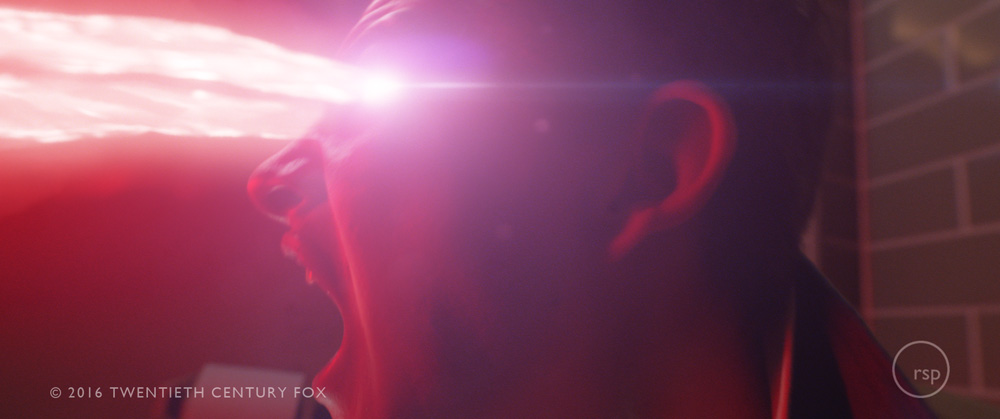
Stereo Beams
Rendering with the Arnold renderer, the team used deep rendering on some shots with deep EXRs. This technique allowed them to adjust single render passes, although the files require very large amounts of disk space. Arnold’s raytracing is also very accurate, which was important for the work they were doing.
RSP was also responsible for the first sequences in the film in which the character Cyclops appears. Cyclops’ destructive, streaming eye beams had originally been invented by Hydraulx for the earlier X-Men films. “This look gave us a clear target. As an effect, it wasn’t too difficult to recreate,” Tim said. “To avoid the effect of the flow rolling backwards, we could dial in its amplitude and frequency to work with the variable frame rates of different shots.”
The beams gave rise to other complications, however, when Cyclops ducks into the toilet block. This was shot in native stereo in a very reflective set, and the lighting crew had set up interactive lighting for the intense glow from the beams. The beams themselves had to be composited into the stereo footage. Depending on the camera angle, only one beam was visible in some shots while in others, both could be seen. Reflections needed to surround the action in all directions and, due to the stereo footage, had to be placed at precisely the correct depth to avoid causing artefacts.
When Cyclops inadvertently allows his super vision beams to split Professor Xavier’s favourite tree apart, RSP chose a well-known memorial tree in Adelaide as their reference and re-built it digitally using a full set of photogrammetry images. Inside the tree, they also built a procedural bones set-up which they used to grow out the small twigs and leaves sprouting at the ends of the branches. The tree also needed to be reflected in the surface of the pond where it stands which required recreating the pond’s water in CG to include a reflection.
Finally, to split it apart, they used a dual approach. As well as the whole tree, a second, split version was built. The splitting action was first created as a simple animation which was used to control a procedural simulation happening on top of it. rsp.com.au
Words: Adriene Hurst
Images: © Twentieth Century Fox


















